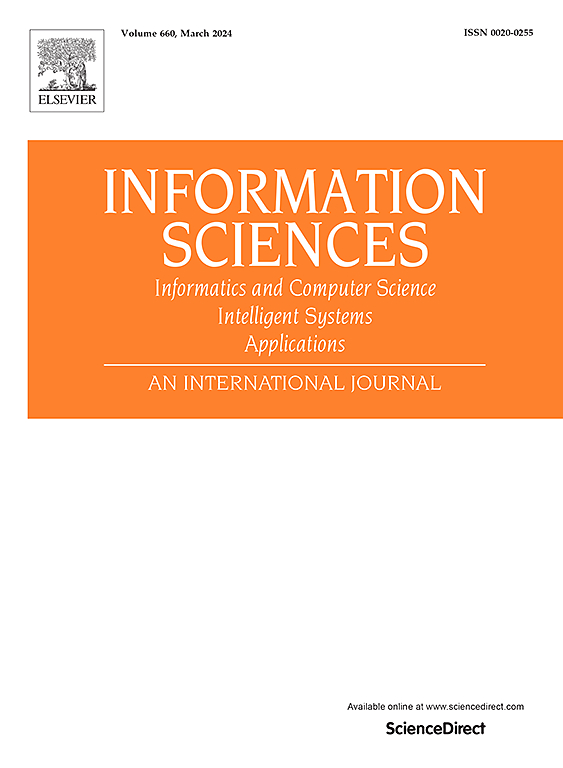Gaussian belief propagation for dynamic obstacle avoidance and formation control in second-order multi-agent systems
IF 6.8
1区 计算机科学
0 COMPUTER SCIENCE, INFORMATION SYSTEMS
引用次数: 0
Abstract
This paper proposes a control strategy that combines Gaussian Belief Propagation (GBP) with the Artificial Potential Field (APF) method, enabling Multi-Agent Systems (MASs) to achieve global consensus in formation control while flexibly responding to dynamic obstacles within the GBP-based framework. Existing APF-based methods are difficult to cope with fast-moving obstacles exceeding the speed threshold, while the adaptive formation control and stochastic dynamic obstacle avoidance methods proposed in this paper effectively address this challenge. By utilizing the control method proposed in this paper, the MASs are able to accurately predict the future position of such obstacles and pre-plan the obstacle avoidance path. In addition, they are also able to seamlessly return to the desired formation trajectory after effectively solving the collision avoidance challenge, which proves the generalizability of our newly proposed method in various dynamic scenarios. This research offers novel insights and approaches for adaptive control and dynamic obstacle avoidance in MASs.
二阶多智能体系统动态避障与编队控制的高斯信念传播
本文提出了一种将高斯信念传播(GBP)与人工势场(APF)方法相结合的控制策略,使多智能体系统(MASs)在基于GBP的框架下,既能实现全局共识,又能灵活地响应动态障碍物。现有的基于apf的方法难以应对超过速度阈值的快速移动障碍物,而本文提出的自适应编队控制和随机动态避障方法有效地解决了这一挑战。利用本文提出的控制方法,MASs能够准确预测此类障碍物未来的位置,并预先规划避障路径。此外,在有效地解决了避碰难题后,它们还能够无缝地返回到期望的地层轨迹,这证明了我们新提出的方法在各种动态场景中的泛化性。该研究为车辆自适应控制和动态避障提供了新的思路和方法。
本文章由计算机程序翻译,如有差异,请以英文原文为准。
求助全文
约1分钟内获得全文
求助全文
来源期刊

Information Sciences
工程技术-计算机:信息系统
CiteScore
14.00
自引率
17.30%
发文量
1322
审稿时长
10.4 months
期刊介绍:
Informatics and Computer Science Intelligent Systems Applications is an esteemed international journal that focuses on publishing original and creative research findings in the field of information sciences. We also feature a limited number of timely tutorial and surveying contributions.
Our journal aims to cater to a diverse audience, including researchers, developers, managers, strategic planners, graduate students, and anyone interested in staying up-to-date with cutting-edge research in information science, knowledge engineering, and intelligent systems. While readers are expected to share a common interest in information science, they come from varying backgrounds such as engineering, mathematics, statistics, physics, computer science, cell biology, molecular biology, management science, cognitive science, neurobiology, behavioral sciences, and biochemistry.
 求助内容:
求助内容: 应助结果提醒方式:
应助结果提醒方式:


